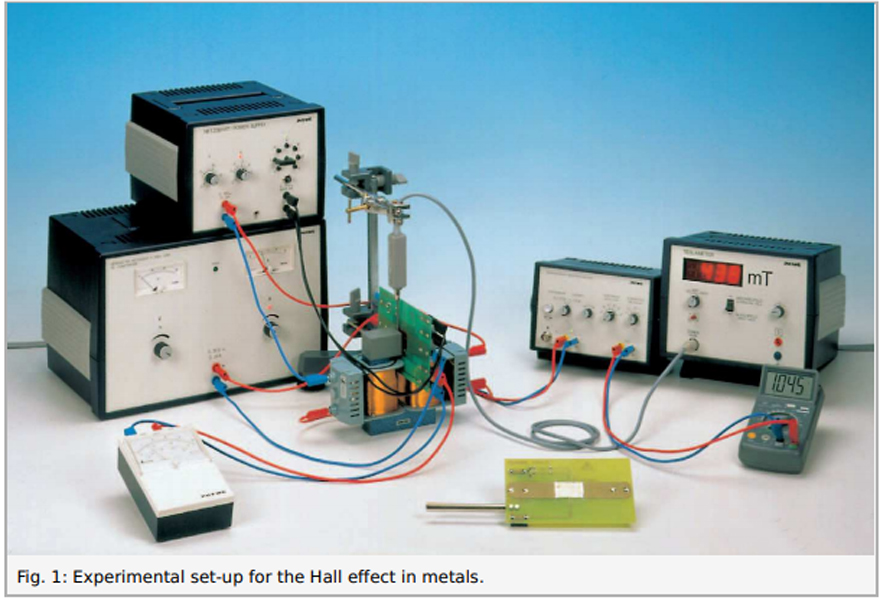Hall effect in metals

The Hall effect in thin zinc and copper foils is studied and the Hall coefficient determined. The effect of temperature on the Hall voltage is investigated.
Hall effect, Cu, carrier board
Hall effect, zinc, carrier board
PHYWE power supply, stabilized with analogue displays DC: 0…30 V, 20 A
Hall probe, tangential, protection cap
PHYWE Teslameter, digital
PHYWE Universal measuring amplifier
Universal clamp with joint
Tripod base PHYWE
Support rod, stainless steel, l = 250 mm, d = 10 mm
Pole pieces,plane,30x30x48mm, 2
Iron core, U-shaped, laminated electric steel
Coil, 300 turns
Meter, 10/30 mV, 200 deg.C
Digital multimeter 2005
Connecting cord, 32 A, 750 mm, red
Connecting cord, 32 A, 750 mm, blue
Connecting cord, 32 A, 750 mm, black
PHYWE power supply, universal DC: 0…18 V, 0…5 A / AC: 2/4/6/8/10/12/15 V, 5 A
Right angle clamp expert
- The Hall voltage is measured in thin copper and zinc foils.
- The Hall coefficient is determined from measurements of the current and the magnetic induction.
- The temperature dependence of the Hall voltage is investigated on the copper sample.
- Normal Hall effect
- Anomalous Hall effect
- Charge carriers
- Hall mobility
- Electrons
- Defect electrons
